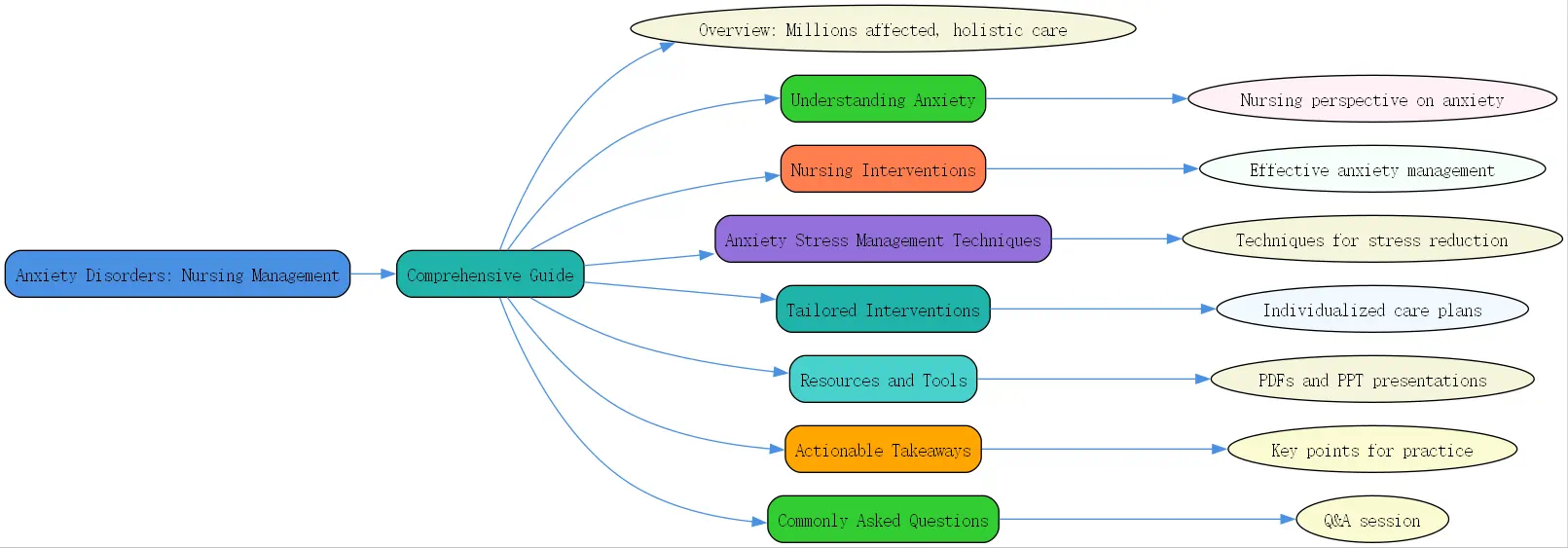Nursing Management of Anxiety Disorders: A Comprehensive Guide

Anxiety disorders are among the most prevalent mental health challenges worldwide, affecting millions of individuals each year. Their impact often extends beyond the emotional realm, influencing physical health, work productivity, and relationships. For nurses, understanding and effectively managing anxiety disorders is vital to providing holistic care and fostering patient well-being. In this article, we explore actionable strategies and essential resources for nursing management of anxiety disorders, including anxiety stress management techniques, tailored interventions, and recommended tools such as nursing management PDFs and PPT presentations.
Understanding Anxiety Disorders: A Nursing Perspective
Defining Anxiety Disorders and Their Impact
Anxiety disorders encompass a range of conditions characterized by excessive fear, worry, and related behavioral disturbances. These disorders, including Generalized Anxiety Disorder (GAD), Panic Disorder, Post-Traumatic Stress Disorder (PTSD), and Obsessive Compulsive Disorder (OCD), significantly impair patients’ ability to navigate daily life challenges. Nurses often encounter patients experiencing symptoms such as heightened heart rates, shortness of breath, irritability, and relentless worry.
From a nursing perspective, intervening early and comprehensively can mitigate these symptoms and prevent secondary complications such as depression or substance use. Nurses play a pivotal role in assessing and supporting the emotional resilience of patients coping with anxiety while emphasizing both physical and mental health strategies to promote recovery effectively.
Common Types of Anxiety Disorders
- GAD (Generalized Anxiety Disorder): Characterized by chronic and excessive worry about everyday issues.
- Panic Disorder: Episodes of intense fear often coupled with physical symptoms such as rapid heartbeat and dizziness.
- PTSD (Post-Traumatic Stress Disorder): Triggered by traumatic events, leading to flashbacks, nightmares, and emotional numbness.
- OCD (Obsessive-Compulsive Disorder): Involves persistent, intrusive thoughts and repetitive behaviors designed to reduce anxiety.

Understanding these distinctions allows nurses to tailor interventions to the specific needs of each patient.
The Role of Nurses in Anxiety Management
Nursing management of anxiety disorders extends beyond clinical assessment. Nurses are tasked with providing emotional support, fostering trust, and empowering patients through education and resources. From administering medication prescribed by psychiatric professionals to guiding patients in lifestyle modifications, nurses serve as both caretakers and advocates in anxiety treatment. Furthermore, offering accessible resources such as tools in nursing management of anxiety disorders PPT presentations or PDF guides enhances patient understanding and adherence.
Effective Nursing Interventions for Anxiety Management

Anxiety Stress Management Techniques: Practical Approaches
A cornerstone of nursing care in anxiety is teaching stress management techniques that patients can integrate into their lives. Practical strategies include mindfulness practices, guided breathing exercises, and progressive muscle relaxation. For example, encouraging patients to engage in daily mindfulness activities has been shown to reduce psychological distress and improve emotional regulation.
In acute settings, nurses may use distraction techniques, grounding exercises, or even structured journaling as immediate interventions to redirect anxious thoughts. Equipping patients with strategies to identify triggers and manage responses empowers them to regain control over their mental state.
Cognitive Behavioral Therapy (CBT) Techniques for Nurses
CBT has emerged as one of the most effective psychotherapeutic approaches for anxiety disorders. Nurses with training in CBT techniques can play an active role in helping patients challenge distorted thought patterns and build healthier coping mechanisms. Key strategies include:
- Recognizing cognitive distortions: Helping patients identify irrational thinking, such as catastrophic predictions or unrealistic expectations.
- Reframing negative beliefs: Collaborating with patients to replace harmful thoughts with constructive, balanced perspectives.
- Exposure and desensitization: Gradually encouraging patients to face their fears in a controlled and supportive environment.
Implementing CBT concepts within nursing practice bridges the gap between clinical care and psychological support, especially for patients hesitant to engage in formal therapy.
Mindfulness and Relaxation Techniques: A Nurse’s Toolkit
Mindfulness has gained widespread recognition as a powerful tool for managing anxiety. Nurses can guide patients in incorporating relaxation techniques such as body scans, mindful breathing, or gratitude journaling into their daily routines. These practices encourage patients to remain grounded in the present and prevent their minds from becoming overwhelmed by anxious thoughts.
For instance, leading a patient through a simple breathing exercise閳ユ攰nhale for four counts, hold for four counts, and exhale slowly for five counts閳ユ攦an ease acute stress during a hospital visit or clinical session. Over time, these techniques help patients develop greater resilience in their emotional responses.
Resources and Tools for Managing Anxiety Disorders
Review of Recommended Books: Stress and Anxiety Management
For nurses seeking evidence-based resources to enhance patient education, stress- and anxiety-focused literature offers invaluable insights. Books such as The Anxiety and Phobia Workbook by Edmund Bourne provide comprehensive self-help guidelines tailored to specific anxiety disorders. Similarly, Mindfulness for Stress Management by Robert Shaker offers actionable practices to alleviate symptoms and foster optimism.

Nurses can recommend these titles to patients looking to dive deeper into understanding their conditions. In collaborative care settings, leveraging books provides patients with empowering tools beyond clinical visits.
Management of Anxiety Disorders PDF Resources for Nurses
Printable and easily accessible nursing resources such as management of anxiety disorders PDF files remain essential for patient education. These documents can outline step-by-step techniques, emergency protocols, and recommended interventions. For example, a PDF guide may include tailored action plans for managing panic attacks or worksheets designed to identify anxiety triggers and coping responses.
Such resources also serve as quick reference materials for nurses during bedside care, ensuring consistency and accuracy when addressing anxiety symptoms.
Nursing Management of Anxiety Disorders PPT Presentations
Interactive tools like nursing management of anxiety disorders PPT presentations are highly effective in educating both patients and nurses. These slides often include visual diagrams, case studies, and quizzes to engage audiences in stress and anxiety management techniques. Within group settings or patient workshops, they can lead to more dynamic discussions and improved comprehension.
For organizations like BrainTalking, creating accessible PPT presentations on nursing interventions serves as a foundational approach to promoting mental health literacy across diverse communities.
Actionable Takeaways
1. Empower Patients: Teach anxiety stress management techniques such as mindfulness and breathing exercises to encourage emotional control. 2. Integrate CBT: Utilize cognitive behavioral strategies, such as reframing negative thoughts, to support long-term recovery. 3. Resource Sharing: Leverage tools like management of anxiety disorders PDF and nursing management of anxiety disorders PPT for better education. 4. Focus on Individualized Care: Match interventions to patients’ unique clinical profiles and emotional needs. 5. Stay Current: Explore new evidence-based literature for innovative strategies in anxiety care.
Q&A: Commonly Asked Questions
Q: How can nurses improve patient outcomes in anxiety management? A: Nurses can dramatically enhance outcomes by focusing on patient education, emotional support, and multimodal interventions. Techniques such as mindfulness training or CBT principles empower patients with actionable strategies while fostering resilience. Furthermore, providing curated resources, like management of anxiety disorders PDFs, ensures patients have ongoing support outside the clinical environment. Collaboration with psychiatric specialists and continuous professional development are additional ways nurses can refine their approach.




